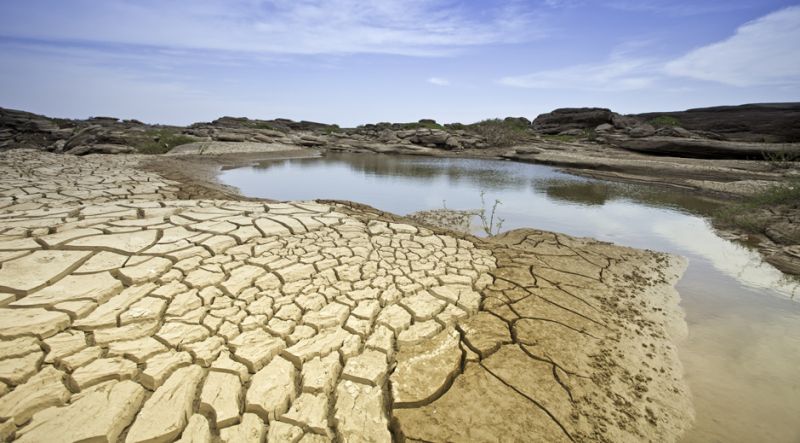Half of Human Population Could Live in Scorching Heat Towards End of the Century
As the globe warms up, scientists predict that by 2070, most of the human population is likely to live in unlivable climate conditions. A recent study has warned that unless greenhouse gas emissions are curbed, earth could become unlivable owing to global warming. If the climatic conditions get warmer then it could eliminate the conditions deemed suitable for human life to flourish.
The study, which was prepared by an international research team of archaeologists, ecologists and climate scientists, was published in the peer-reviewed journal Proceedings of the National Academy of Sciences.
Average annual temperatures will rise beyond the climate under which humans have lived and thrived for 6,000 years. That roughly amounts to average yearly temperatures of 52 to 59 Fahrenheit. It is found that people have mostly lived in such temperatures for several thousand years.
The study warned,
We show that in a business-as-usual climate change scenario, the geographical position of this temperature niche is projected to shift more over the coming 50 years than it has moved in the past 6,000 years.
The paper studied the atmospheric concentrations of high greenhouse gases. The burning of fossil fuels such as coal, oil and gas releases greenhouse gases such as carbon dioxide and methane into Earth’s atmosphere and oceans. According to scientists, these emissions have caused the planet’s temperatures to rise to levels that cannot be explained by natural factors.

Study predicts earth could turn unlivable owing to global warming | Image: Electrolux Group
Temperatures are predicted to soar over the next few decades as a result of human greenhouse gas emissions. If the findings of the study are accurate, then by 2070 a major chunk of the human population will be exposed to average annual temperatures warmer than anywhere today.
Such a harsh hot climate is presently experienced by just 0.8 percent of the global land surface, mostly in the Sahara Desert, but almost 50 years later it could spread to 19 percent of the earth’s total surface area. It includes large parts of northern Africa, the Middle East, northern South America, South Asia, and parts of Australia.
Study co-author Marten Scheffer of Wageningen University in the Netherlands said,
Large areas of the planet would heat to barely survivable levels and they wouldn’t cool down again. Not only would this have devastating direct effects, it leaves societies less able to cope with future crises like new pandemics. The only thing that can stop this happening is a rapid cut in carbon emissions.
With enough money, “you can actually live on the moon,” Scheffer said. But these projections are “unlivable for the ordinary, for poor people, for the average world citizen.”
The decrease in greenhouse gas emissions at a quick rate could reduce the number of people exposed to scorching heat to half. Study’s co-author Tim Lenton, a climate specialist from the University of Exeter in the United Kingdom, said,
The good news is that these impacts can be greatly reduced if humanity succeeds in curbing global warming…Our computations show that each degree warming (Celsius) above present levels corresponds to roughly 1 billion people falling outside of the climate niche. It is important that we can now express the benefits of curbing greenhouse gas emissions in something more human than just monetary terms.
Places like impoverished Nigeria — with a population expected to triple by the end of the century — would be less able to cope, Lenton further said.
If anything, the current global warming trends have proved that the planet is moving toward its doom and the atmosphere will most probably turn into an unlivable environment. However, there are things and precautions that mankind can take to avert this crisis.
It can only be hoped that this revelation will bring mankind to its senses.
Via: USA Today


